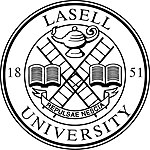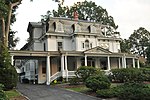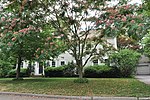Old Shephard Farm

The Old Shephard Farm is a historic farmhouse at 1832 Washington Street in Newton, Massachusetts. Around 1740 a house was built on what is now Washington Street by Alexander Sheperd, one of the early settlers of the Auburndale area of Newton. This is house was repeatedly enlarged and added, resulting in a large house consisting of a main block and three ells by the end of the 19th century. In 1952 its rear wing (believed to be the oldest portion of the house), was separated and converted into a separate residence; this portion is now numbered 1832 Washington, while the main portion is at 1828 Washington.The house at 1832 Washington was listed on the National Register of Historic Places in 1986. It was extensively renovated in 2013–14.
Excerpt from the Wikipedia article Old Shephard Farm (License: CC BY-SA 3.0, Authors, Images).Old Shephard Farm
Stanton Avenue, Newton Auburndale
Geographical coordinates (GPS) Address Nearby Places Show on map
Geographical coordinates (GPS)
| Latitude | Longitude |
|---|---|
| N 42.336111111111 ° | E -71.241111111111 ° |
Address
Stanton Avenue
02481 Newton, Auburndale
Massachusetts, United States
Open on Google Maps








